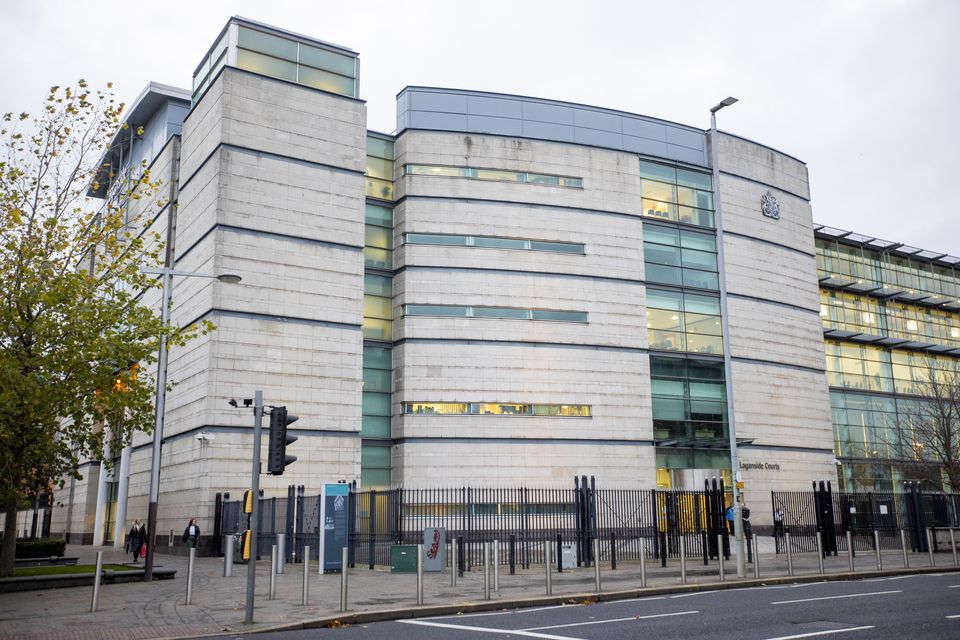An unidentified British Army soldier was responsible “more likely than not” for the fatal shooting of a schoolboy in the grounds of a Belfast hospital almost 50 years ago, a coroner has found.
Patrick Crawford, 15, was shot dead while walking through the grounds of the Royal Victoria Hospital at around 9.40pm on August 10 1975.
In 2015, Northern Ireland’s former attorney general John Larkin granted a fresh inquest into Patrick’s death after representations from his family over the Troubles killing.
Delivering his findings at Belfast’s Laganside Courthouse on Monday, Judge Philip Gilpin said the teenager died of a single gunshot wound to the chest.
He told the court: “The cumulative effect of the facts as found by me, and the various strands of evidence when brought together, satisfy me on the balance of probabilities, to a sufficient degree of cogency, that it is more likely than not that Patrick was shot by an unidentified British Army soldier in circumstances where they could not have had a reasonable belief of a threat of force.”
He rejected theories the teenager had been killed as part of an IRA feud, stating he “was an innocent 15-year-old boy not involved in any suspect activity at the time he was shot”.
The coroner also said he would take written submissions on whether he should remove anonymity orders on two deceased soldiers which were granted during the inquest proceedings.
The court was told that on the day Patrick was shot there had been “considerable civil disturbance” in west Belfast and that a rally had taken place to mark the fourth anniversary of the introduction of internment in Northern Ireland.
Mr Gilpin said there had been outbreaks of sporadic violence “including gunfire towards members of the Army, particularly in and around the area of the RVH (Royal Victoria Hospital).”
Patrick, who was walking home, had encountered two women, Annie Miskimmin and Catherine Faloon, and asked them to walk with him through the hospital grounds as he was “nervous of the army in the RVH”.
The coroner said he had concluded there were two possible locations where the shot that killed Patrick had been discharged, the Gynae building and Quinn House.
He found that the bullet which killed the teenager “was more likely than not to have been a high velocity one”.
Mr Gilpin said there had been a “significant and persistent military presence in the RVH”.
He added: “I consider that to all intents and purposes the military were in control of this area, in significant numbers, were armed, and recorded as being actively looking for a gunman, at least in the time prior to Patrick’s arrival in that area.”
The inquest findings were delivered at Laganside Courthouse in Belfast (Liam McBurney/PA)
The coroner said it had not proven possible to identify the person who shot Patrick but that there were two possibilities – a soldier or a member of a paramilitary organisation.
He said: “I consider that the reality was that only military personnel could have had sufficient freedom to access the roof of either the one and a half storey Gynae building or Quinn House.”
The coroner rejected “rumours” that Patrick had been involved with the Official IRA or had been shot as part of an IRA feud.
He said: “I was satisfied at the conclusion of all the evidence that this view remained unchanged and unchallenged, namely that Patrick was an innocent 15-year-old boy not involved in any suspect activity at the time he was shot.”
He also said there was “no evidence of there being a paramilitary gunman within the grounds of the RVH at the time Patrick was shot”.
He described the RUC investigation into the death in 1975 as “perfunctory”.
The coroner said: “There was no scene search as such, no attempt to retain clothing for analysis, no proper attempt to look for the bullet that killed Patrick and no proper engagement with witnesses.
“The absence of investigation only lends itself, in my view, to support a narrative that what happened to Patrick was known at the time and so there was no appetite to explore those events given the involvement of the Army.”
Mr Gilpin said, given his findings, he would take submissions on whether anonymity orders on two dead soldiers given the ciphers PC02 and PC03 would be removed.
He said he would rule on that in the new year before closing the legacy inquest.
